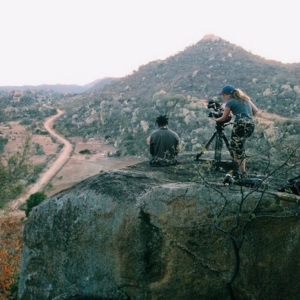
The Camera That Listens: an interview with Tess Girard (2012)
Mike: There are some people — their faces still look back at me from billboards and magazine covers — who seem possessed of lifelong certainties. Whatever they are doing now was imagined long ago, even in the hospital’s delivery room. Did you always know you would make movies? Are there early encounters with pictures that marked you somehow, that offered the alternating current of promises and withheld mysteries that prompted further inquiries?
Tess: My grandfather was a projectionist. My mother is an abstract painter and watercolourist who spent time in her youth at his Mustang Drive-in outside of London, Ontario.
For as long as I can remember, I’ve had a fascination with images. I was a prolific drawer, even as a young child. I would spend hours on intricate depictions of everyday scenes that analyzed the most minute of details: the way my mother cocked her head while talking on the phone, or my grandmother’s flat, unkempt hair while she dozed off watching television. All illustrated in poorly rendered, five-year-old doodles.
I have always had a love of storytelling, photography, music, mechanics, and tactile crafts. I have always been a daydreamer. One would think, connecting the dots, that I was meant for filmmaking. But at the time of making the grand decision in grade thirteen of what major to pick, the choice seemed rather arbitrary.
My teen years were spent growing up outside a small town in Ontario with no movie theatre. By the time I was born, my grandfather had retired from his projectionist job. We had no cable TV and perhaps only two or three channels (I wouldn’t know, I never watched them). I had little exposure to movies beyond major Hollywood blockbusters, which I was indifferent toward.
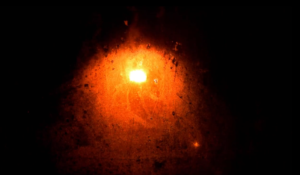
In high school it seemed like I was on a path to become either a painter or a pilot (having earned my private pilot license at seventeen). But since my mother was a successful painter, I felt I wanted to do something different. And being a pilot wouldn’t fulfill that urge within me to create. I filled in “York University: Film and Video Production” because I had a vague idea that it would combine all of my interests into one path. For the first two years it didn’t and I feared I had made the wrong choice. The beginning of film school was spent teaching students the traditional methods of filmmaking. There was a major focus on scriptwriting and structure and though I had incredibly smart teachers, the model didn’t fit. I now understand that students must be taught the rules before they can learn how to properly break them, but at the time I felt constrained.
It wasn’t until my third year when I took a course with Phil Hoffman that my opinion changed. The walls fell down as he let us create, explore, experiment, and spill our hearts out without judgment. He encouraged process pieces; a concept I couldn’t have fathomed before that point. I remember a distinct moment: lights out in a dark room, my hands in a bath of developer feeling the emulsion, having missed the last bus home in the crunch of deadlines. I thought to myself, “This is where I’m meant to be.” Of course, the epiphany wasn’t definitive, I’ve had (and still have) my share of challenges, doubts, and moments of giving up along the way. But it is a career forged by determination, and the longer I stick it out, the more I know it is the right one.
A side note to this question that I couldn’t find a place to fit in. It answers the part that “offered the alternating current of promises.” Growing up in a small town I was burdened with the feeling that I was stuck in a place that I would never leave. But I can thank the exposure my father provided of the outside world for my desire to venture beyond my immediate surroundings. My father’s job in aviation forced him to travel for months on end. He spent extensive amounts of time in Thailand, Indonesia, Europe, Benin, the Arctic… even Iceland and Greenland. As a toddler, I lived in Halifax, Northern Quebec, Tennessee and Antigua. His postcards and gifts from afar always made me daydream about what existed beyond my sheltered, small town surroundings. It became a life goal to follow his path of endless curiosity and global exploration, though it is only accidentally (unconsciously?) that filmmaking pushed me in that direction.
Mike: I wonder if you could elaborate on your childhood drawing career. You mention living inside moments, carefully scrutinized and laid down in your own hand, lived again through the muscles of reproduction. All of my friends under ten endlessly model versions of what appears around them — in the course of a single afternoon they become dancers and depressives, mothers and sons, angry, jealous and joyous. Were your drawings also part of a growing repertoire of possible lives? (Am I also this?) Were pictures a form of sympathetic magic, a way of conjuring a once and future body that you could grow into?
Tess: In the eyes of a child, everything has sympathetic magic. Reality and daydreams live on the same plane and one can quickly slip between the two. A pen does not write on paper, it spills ink that forms negative space with fractals of bleeding lines. Similarly, a pencil pours graphite that fills the contours and textures of paper and forms a line, which in turn joins another line and soon becomes a shape.
Drawings are not images; they are processes and a means to express an understanding of relationships. So it is not an image of a hand, but the detailed study of a knuckle, a fingernail, the intricate lines and veins, the spaces between the fingers, and their relationship to one another. My drawing is not a depiction of reality, but an expression of the relationship between its elements. The whole is nothing without the space that exists between individual parts. And a child — or at least my childhood self — could get lost for hours exploring these pathways.
It is only when an adult says to the child, “This is a good drawing,” that it is viewed as a whole, and realistic rendering becomes prioritized over a process-oriented path to understanding one’s surroundings. I don’t think drawings are projections of a future self, but instead a record of a fresh and fragile perception. In the process of drawing, time stops and the mental pathways of that moment are fossilized on paper.
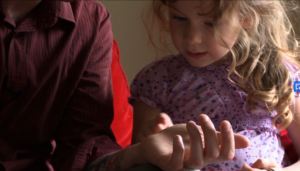
Mike: Drawing has so much to do with translating the visible (and the feeling tone of a relationship) into muscular synapses, and its technology remains relatively modest: a pencil and paper. But the cinema brings a more specific eye prostheses to bear on its subjects, producing a very specific distance or closeness. Could you talk about your time behind a camera, in relation to your drawing practice? Do you ever have a sense with your drawing that you’re just trying things out, that it doesn’t have to arrive somewhere, and do you have less of a sense of that free play while making a film, with its specific subject demands, the inter-related parts asking for certain elements like a soup wanting thickening? Or is there no difference at all?
Tess: I was thinking of filmmaking while answering that last question and trying to see where the parallels lay. It’s very important in filmmaking to explore a parallel art form that allows you to analyze the themes of your work. For me, drawing is an unconscious way of doing this. Focusing on the task allows your thoughts to float above you, untangle themselves, and fall back onto the paper. It exercises the filmmaking muscles.
There is an immediate similarity of visceral expression between drawing and filmmaking. Much of the process of filmmaking translates the visible into an understanding of relationships. A filmmaker is essentially drawing in multiple dimensions with the camera: following lines, arriving at shapes, associating those shapes with similar shapes and finding symmetry and balance to create an interpretation of what one sees.
The initial processes of my films are about trying to maintain this direct connection with the subject and creating an uninterrupted flow of artistic exploration. But this also creates an inherent tension as this is completely contradictory to the industry of filmmaking. My crews are generally small, most often just myself and my camera. I try to shoot with only a general framework to go by. I know my themes, my subject, and the context in which things should be seen, but try to stay open to whatever comes my way. While editing, the process is more like drawing where I can take time to explore and move things around. I can play with sound and structure. I can try multiple paths. But somewhere in the filmmaking machine the sense of play shrinks.
Filmmaking is never in the present tense. You’re shooting a film with an idea you had two years ago, that you applied for funding a year ago. You’re endlessly editing a film you shot how long ago? Then you’re screening your film to an audience who are seeing these ideas for the first time, talking about them as if they are still relevant to your current state of mind. But the long process of making that film has changed you, you’re not even the same person you were when you started making it. It’s very difficult to keep that fresh, expressive, direct contact with your work in these conditions.
There are benefits to this: the long gaps between the stages of a film can allow things to simmer, bringing out complex ideas that wouldn’t have been possible with a quick turnaround. It brings out detail.
Drawing is an exploration, particularly because I didn’t pursue it as a career. Nobody will see my drawings. Films, on the other hand, are products (or at least are perceived as such by some preconceived industry assumption). The process of making them is rife with pressures to make a successful, profitable product.
I sometimes still have the youthful fear that no film I make can ever “fail.” I am only now starting to get over this. Films can only “fail” if they are perceived as products, but if they are understood as processes they can only ever be successes. In the end, I’d like to be able to create a process of filmmaking that allows me to “draw” my films, not make more products.
Mike: I wonder if you could bring me into the moment of making a picture, if you might unfold a moment a time, both in front of the lens, and while you’re drawing, as your hand runs itself across a piece of paper trying to conjure a face. Could you narrate a specific instance of looking and the process of translation?
Tess: Has anyone ever admitted to you how challenging it is to answer these questions? They ask for sentiments in a language many people never get the chance to use. They ask us to frame things in ways we only ever do in our unconscious minds and describe them with a tool (writing) that is so much about being conscious. They ask us to put down our barriers, relax our insecurities, and open up to a very intimate and vulnerable place we might never even allow the closest of lovers. This is all good. The best things are never easy. But it’s why I take so long with them. So I’ll take a deep breath and give you an answer….
I’ll paint you a hypothetical scene. I’m sitting in a park and I want to film (or maybe draw) the person I see. Not because I’m interested in this person as an image, but I’m interested in what they represent. They have some connection to an idea I want to explore. But when I look through the lens or start to sketch them, all I get is a flat picture of that person (which really could be anybody sitting in a park).
The first shot or sketch is a disappointment. It’s diluted with insecurity, deadlines, stereotypes. I’m looking at the subject through the lens of all the pressures that lead me here in the first place, the need to uncover something useful for my movie. What is it I’m really trying to capture? What is it beyond this person that I’m looking for? And why am I looking for it?
What I’m here to capture is not a person, but something else that’s entirely invisible and possibly uncapturable. I close my eyes and feel around in the dark. There’s a sound somewhere in the distance, some oscillating machine barely audible one street over. Two streets away some children are playing. At the bottom of the park, a main street sucks the sound of a construction site into its undertow and allows its hum to echo off the condo canyon walls. Is this what I’m here to capture? My mind wanders all the way back to my apartment three neighbourhoods away where there’s a neon post-it note beside my computer reading: Film Person In Park next to another one that says File HST Return.
The rumble of the subway beneath my feet brings my mind back to closer proximity. But that little trip wasn’t a tangent or stream of consciousness. All of these small attentions add up to how this Thing, this Uncapturable Thing, is perceived.
If I’m here to try to make an image of a person, I focus on everything but that person. What are the components that make this person who they are in that moment? What makes this person a whole? How are they related to whatever this idea is I’m exploring? What the hell am I exploring again? As my mind wanders, so does my camera or pencil to the creases of their hands, or the pattern of light and shadow they’ve cast beneath them. And suddenly there it is: the ghost of the idea. The traces and echoes of the original Uncapturable Thing I had set out to find. But in the simple act of trying to capture it, this Thing has shifted and changed. The moment has passed and it’s gone. So I move on and try to find it again.
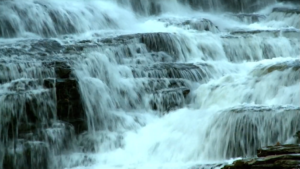
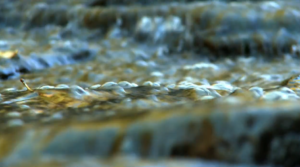
Mike: Why pick up a camera if not to film the invisible? What else could possibly be worth the effort and expense, the toll that creating pictures requires? What you’re describing, I think, is working through some initial, habit-patterned response, and waiting for the subject to settle into their context, to see how they are part of the ecology of this moment. From this newly wide vantage, you move closer to find details that echo the whole. John Berger describes the art of making pictures as a stereo event. He insists that there is looking happening from both sides of the canvas — from the painter and her subject — even if that subject is a bowl of fruit, or a wall. These two looks meet on the plane of the canvas, or the glass of a lens. Does this make sense to you? You also give your pictures time to develop, to get over the first response, you recalibrate, and start again. This seems so important, particularly now, when our digital devices are busy convincing us that there is no time to lose, that we don’t have time to make an approach to pictures.
Tess: The pursuit and process of capturing the fleeting is filmmaking. Cameras are tools for the curious; using one is a way to ask questions, just like looking through a telescope and trying to see what lies in our field of vision. And for myself, especially, it is about plunging into the unknown (even the unknown within ten feet of my house) and then letting myself have time to shed the fears, anxieties, and distractions brought up by the situation to allow for an untainted, curious pursuit.
In astronomy and particle physics there is an entity called dark matter: a substance that can only be detected by its effect on other things. It neither emits nor absorbs light, and no tools are able to detect it. Yet it is the ingredient which most of the universe is made. I’ve always felt filmmaking was like the search for dark matter. A search for a way of seeing that looks beyond what is detectible and attempts to understand an unperceivable entity.
We’re using these scientific tools to try and reach something beyond technology. Consequently, it takes time to shed the burdens that come with our machines. And the apparent ease with which images can be gathered using digital cameras increases the tendency towards distraction. There is so much temptation to simply point, click, and get the film done so I can go back to paying my rent. I need to force myself to spend time in the moment. Let all the impurities leave, let them distill, let all the sand fall to the bottom and allow the desired element, whatever it is, to slowly arise.
Curiosity puts me in dialogue with an unknown place that exists behind an image, layered behind each subject. The subject exists beneath a wall of social and technical pressures, which in turn lie behind a wall of the millions of images we’ve already seen. It’s a very focused task trying to penetrate this space, especially without a map or instructions on how to get there.
I’m not familiar with John Berger, but something does look back at you. There wouldn’t be a viewer without the seen. And whether your subject is aware of you filming or not, there is something that draws you in. In shedding barriers and spending time with a subject, the doors of trust are open and you’re taken to a deeper place. Whether the subject is alive or inanimate, trust needs to be developed.
It’s similar to the process of making music. People often think that music is about creating sounds. But so much about music is listening. Filming is the same way. Most of the time it’s about taking in the surroundings and quietly contemplating them. It’s about receiving context and understanding both the subjective and objective experiences.
Mike: The camera that listens, the filmmaker who approaches her subject by waiting, attending, hovering close by. It sounds almost maternal, developmental even. The “good enough” mother might be close enough to her child for mutual acknowledgment, but without making demands, or offering direction, the child is freed to unintegrate, and invent possible selves outside of their usual descriptions (which you describe as social and technical pressures).
I was at a party recently where I met Oscar Wilde’s doppelganger; language possessed him, and it poured out of his mouth in immaculate sentences. Even as he held us in his thrall he was mortified, he kept saying what he couldn’t himself hear or understand. And even though he didn’t know what secret he was sharing, he knew that we knew. And that made his blushing muscles eight times normal size. How to wait until the subject speaks or shows their secret?
Tess: It is true that creating is a very maternal! It requires patience to mold and nurture, and patience to let go despite every instinct to perfect. It’s often about adjusting your expectations as opposed to forcing the work in a particular direction. The child teaches the parent more than she could ever teach it. And then the mother must watch that child walk away and become something that is no longer a part of her.
Creating is also a balance of taking raw expression, spontaneous moments, and coveted findings, then meticulously curating the results. So the first step is about spilling everything out, or letting the subject spill everything out. This process leads to results with beautiful, rough edges, but also causes the maker to blush. I’m making something I’ve never made before (if I’m making something I’ve already made before, I shouldn’t be making it!) and letting people see it. But this space of vulnerability allows the subject to enter. We are two adjacent genes in the DNA of the process.
This strategy of waiting requires your subject to speak to you. Sometimes it’s about just waiting with the camera until something happens. Until little beads of light pass the lens and the camera follows like a magnet. If I’ve ever gone out with a particular purpose to shoot something, the attempt always fails, and I can’t use the footage. It’s as if the process of planning erases whatever aura might have existed in the subject. It’s when I’m walking home with four bags of groceries that the subject finds me on the street and wants to have a longwinded conversation. Filmmaking is a conversation. It’s two way. I’m listening to the subject as much as it’s listening to me. We’re telling each other secrets we didn’t know we held inside. We’re speaking in forgotten languages we didn’t know we knew and teaching each other new words.
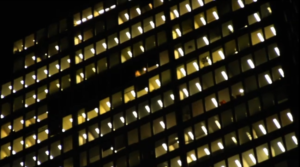

Mike: Solstice (12 minutes 2004) is a hand-processed, low fidelity, diary movie driven by your voice-over. Dreamily impressionistic, there are pictures of you drawing (wow, you can really draw!) when your boyfriend-to-be shows up, and then you return us to the slow motion turtles, dark and flickering in the brown chemistry. You describe a picture (never shown) of the two of you where your eyes aren’t looking at him (or so you say) and your smile is uncertain. In the unseen photograph your hand is pulling away even as he can’t stop smiling, one half of an apparently perfect couple. This post-fairy tale of a mostly unwanted romance is unusual in its detailings and savvy recountings. In place of a smooth storytelling there are the stops and starts of real life, various escape artistries on your part, and then a final ambivalent trek to Montreal where he is attending university, and then you never see each other again. And then he dies. What led you to make this first person fete, and how did you go about gathering the pictures and sounds? It’s so extraordinarily personal, much of its strength comes from the gravity of its revealing, along with its very lyric asides of course. Was it difficult to decide what would and wouldn’t be revealed?
Tess: I haven’t watched this film since it was made. Partially because it was a process film where I was trying to piece together some very difficult memories that I had tried so hard to push away a few years prior. It accomplished its goal and the process for me was more important than the product.
Now, a decade later, I piece together those memories very differently. The narrative is not the same. Has the story changed or only my interpretation? The film records the way I looked back in that period of my life. I find it interesting to revisit those thoughts again and see how differently I feel that story now.
I tried to construct the film like memory itself. It is deliberately vague, often muddy, but also constantly returning to details and themes. I tried to construct it in a way that referenced the medium, so the filmmaking and the recollection were one and the same. Much like a drawing, it meanders from point to point eventually forming an impression of a picture.
This film was made in my first class with Phil Hoffman in my third year at university. Though I wanted to make it before starting his class, he introduced me to a whole new type of film: the hand-processed diary film. I was suddenly in a space where I didn’t feel like I had to make a specific type of film. I wasn’t given an assignment, I was told I could make anything I wanted. Most importantly, I felt very safe in his class. He made an arena for our class to just pour everything out onto film and delicately sculpt that into something beautiful. He introduced us to the raw materials within.
Hand-processing was also new to me. I had done a lot of photography, but the dark room was foreign. The painterly qualities of the hand-processed image resonated with the tactile, visual art side of me. A regular image brought into the dark room became electrified in an infinite number of surprising ways. I loved the element of surprise.
The process of gathering images was a bit like spreading a wide net and then picking out the pieces that interconnected. I shot many things I found interesting just as images and when something clicked, I expanded on this. I was at my sister’s house with the camera and her turtle caught my attention with its clumsy walking and graceful swimming. As I filmed him I remembered this funny story when I was hiking and a friend fell, only her backpack was so heavy she couldn’t get up. She just waved her arms like a little turtle. So I used the analogy of a turtle caught on his back and I liked the idea of seeing an abstract image throughout the story and understanding its context only at the end. Throughout the film, we see the little guy swimming around, emerging out of the muddy chemistry and then disappearing again, but the story isn’t told until the end. The journey of watching the film is as much a process of piecing everything together as it was for me to make it.
Mike: Everything you say about the process of the film’s making is sharply illuminating. But as I’m sure you must have noticed, you are skirting around the entire subject matter of the film, which not incidentally is a major (?) moment in your life, the death of a former lover, and the unstoried story that brought you together and apart. Surely this time between the two of you is part of the “raw materials within” of which you speak so eloquently. I’m wondering if you might say something about the act of re-presenting something so intimate, whether you recognize yourself in these pictures, and what it means to have the power to include and exclude, to yes and no so many necessary details of memory.
Tess: I’m moving and write from a pile of boxes and a shell of an apartment. How do two people own so much stuff? Why can’t we let go!? This was a month where my life turned upside down. I’m looking forward to having some time to answer more of your questions and sleeping some.
You caught me skirting, yes! One would think that a filmmaker who makes personal films could easily open up about the topics and feelings they’ve publicly displayed on screen, but it’s quite the opposite. Filmmaking is a bit of a dichotomous creature: making is so solitary and exhibition so public. I don’t necessarily avoid talking about the subject matter, but because it’s so revealing it’s not a topic I nonchalantly expose. Perhaps it’s hard to talk about because I no longer see myself in the film. This story is a large part of me, there is no denying that. But the simple process of making it made me grow as a person and see everything differently. I am not that Tess any more, especially now, many relationships and deaths later. If I were to make that film today, it wouldn’t be the same conversation.
Personal stories and memories are like organisms. In time, they grow and evolve, they fold in on themselves with such complexity that they are hardly recognizable from one year to the next. By making a film at a certain period in life, I made a snapshot of my memory, and arrested its always changing path. That’s not to say it should never be done at all! I think some of the best material comes from this place. But these are all factors I now carefully consider when making films.
The film became a way to explore something I had put away in an unmarked box and didn’t know how to open. The relationship the film describes happened at a young and confusing age and I didn’t possess the language or experience to express the appropriate feelings and properly cope. This time also coincided with a period in adolescence where my friendships were drastically changing, so I didn’t have anyone close enough to talk about it with. It’s about a first relationship that I was so afraid to open up to because I knew it would end with hurt, but my own restraint caused its eventual outcome to be harder to deal with.
Mourning is something that takes place when you are not alone, and in making the film I found the company with which I could properly and finally mourn.
Mike: The dominant cultural habit pattern is to regard ourselves as one person, unified and seamless, though my experience is increasingly molecular. Every morning I wake up as something else. Some days I am a small, light animal. Other mornings I wake up as an old man, ready to die. I’m wondering, when you look at these old pictures, of someone who carries your name, how you would describe that person? What are her defining characteristics, her touchstones? And I’m wondering if you could say something, if this isn’t already too much, about what the man in the film meant to her exactly, how did he fit or not fit into her version of her life, and how did the movie come to bring these two together again? Isn’t that what is happening? The movie is at once marriage and separation document. somehow the two of you will be always together now, even with your rifts and fault lines exposed. And the question of power still makes me wonder. What does it feel like being the survivor, the one who has to hold the memory of the two of you, the fact that only your version is issued?
Tess: Wasn’t it one of Socrates’ students in Plato’s Republic who put forth the idea that the soul is not a single eternity, but instead a flow of many different souls? Antoine De Saint-Exupéry said that to live is to be slowly born.
The story began when she was sixteen, living in a small town in rural Ontario. She was experiencing the isolation that most sixteen year-olds go through, but it was amplified by the fact that she knew few people she had anything in common with. She coped by distracting herself. She excelled in school, and worked many jobs. She constantly made art, she played music and sports, she even flew airplanes. She poured herself into everything she could because if she didn’t, everything would somehow fall apart. But whenever anything good came her way (and many things did because she tried so very hard), she thought herself undeserving and she’d channel that negative energy into doing more. And whenever any good person came her way, she also felt herself undeserving and reacted the only way she knew how. She focused on her little achievements and unintentionally pushed those people away.
It was the difference between what she thought of herself, and what other people perceived her to be that prompted some of her biggest challenges. She thought she didn’t have any friends, so she didn’t maintain the friendships she had. She thought herself undeserving of love, so she denied it was there when it came. This isn’t to say she was cold or uncaring. She cared deeply and that’s what drew people to her. But she was too afraid to open up.
To say none of these qualities still exist isn’t entirely true. Some still manifest themselves in very minute ways, but the experience of losing someone I could have maintained a better relationship with made me reevaluate the relationships I had and others I’d lost.
To describe him is difficult. He is a memory curated through the eyes of a teenager who now questions if she really knew him. I try to maintain a relationship with his memory, but what persists is some version of who he could have been today. He is intellectual, witty, and extremely caring. These were the qualities that intimidated me when we first met, but oddly, it’s these characteristics that I look for in a partner.
If making a film about the experience brought us together, it didn’t come while making it. The film forced me to come to terms with feelings I was afraid to confront, so that years later I could redevelop a relationship with him. The question of power is something I still battle and that’s probably why I don’t show this film. Once my version was told, I felt a need to go back and reevaluate the experience and understand why things might have happened the way they did.
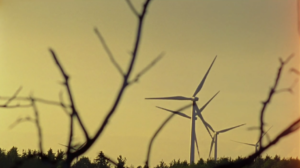
Mike: Benediction (10 minutes 2005) is another first person cinema memorial, recording the duet of your parent’s move away from the house you grew up in, and your grandmother’s death. A lot of the pictures you deploy look like what lab technicians would deem “mistakes;” they are blurry, the colours gone awry, the registration skewed. And in place of, for instance, your grandfather speaking in sync, you offer us an empty, sun-drenched chair, and then close-ups of venetian blind reflections on the wall. Why these emptied asides, these everyday moments of light? There are lost worlds in the grain of your grandfather’s voice, it’s as if he’s delivering his words with a lungful of water. In the film you describe the cascade of pictures made of him after his partner died – can you talk about what’s behind this impulse? Is it a way of holding him here, a living embalming?
Tess: Benediction is a personal film, but it didn’t start out that way. I started making a film not entirely sure of my subject matter. But I knew the themes I wanted to explore. I was fascinated with the idea of cinematography that sees beyond an image and was filming moments around the home that evoked this sense of “beyond.” On a simple philosophical level, Plato’s theory of the cave has always resonated with me. If the camera only sees the shadow of the real, how does one film what is invisible to the eye?
While I was doing this, I was also going through a lot of change and loss in my life, though I had no intentions of putting that in the film. I actually resisted the idea of making something personal because the previous film was so hard to make and show. Both of my grandmothers passed away within three months of each other. For the first time I was seeing my parents as children and understanding that I would one day have to step into that role as well. Nothing amplifies a feeling of loss more than seeing the ones that traditionally comfort you undergoing so much suffering themselves.
Shortly thereafter, my father got a job in Montreal and my parents had to sell the home we had lived in for the past ten years and move away. Because we had moved around so much before I was ten, it was the only sense of home I ever had. I was finishing university, my parents gave away the family dog, and I had a sad breakup with my boyfriend of three years. Everything I had grown accustomed to felt impermanent. The change of roles as I grew older and the sense of regret for not having appreciated things while they were around shifted the ground beneath me. It was the first time I no longer felt like a child.
My mother had a tendency to cling to everything involving my grandfather (her father) after my grandmother’s death. So at Thanksgiving — only one month after my grandmother passed away — my mother took me aside before our annual hike and asked if I could bring my Bolex along. She was afraid that my grandfather would pass away shortly, as so many long-term spouses do. I had just been cleaning the camera and it wasn’t ready, but I quickly threw some film in it and we went on with our day. I made some images of the two of them walking through the forest and captured (or tried to capture) some of the fall colours.
This borrowed sense of personal memory was very odd to me. It was as if we were talking about him in the past tense. It felt wrong, but at the same time it was not safe to assume that he’d be around for much longer. I was compelled to make pictures and try to create a relationship with someone I actually knew little about. I only knew him through my mother.
I made a special visit to my grandfather’s house with an old cassette recorder and recorded a long conversation. It was mostly about getting to know him. He told me many stories about the War and getting into trouble with his crew mates. I had already heard most of these, but between the lines he would let slip sad moments of his current life. Since my grandmother died, he was newly alone.
When I got the rushes back from the Thanksgiving hike, I thought I would watch them and put them away so that I could get on with the movie I imagined I was making. But I was pleasantly surprised with the awful cinematography mistake I had made. The camera wasn’t loaded properly. Instead of an image of my grandfather walking through the forest, I had these incredible streaks of colour and flaring bands of light with vague shadows — the movement suggested the idea of a person walking. This was my grandfather walking through the woods, but he was the last connection to everything that had already passed away. It was then that I realized that this image of a man whose relationship to me felt so fleeting represented exactly what I was trying to make. The theoretical process of looking for the latent impressions of physical elements and the personal process of dealing with family loss were one in the same.
The film quickly came together after this. The little details I had been filming of the house transformed into those last memories within a place. The voice messages I had been saving for the sake of saving became records of my mother’s feelings. The empty chair beside the light on the wall I had been filming suddenly became my grandmother’s empty chair (it was actually her chair, handed down to me), and the light and shadows on the wall became the shadows of the place where these things I had lost had gone. It was amazing that once I had the right lens, everything shifted to fit within the film.
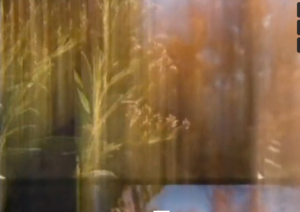
I didn’t find this film as difficult to make even though it was personal. I think that’s because I didn’t start out making a personal film, but instead fit a personal story within the context of a greater idea. So the story, though specific to me, becomes a universal story that many of us have gone through. I had the experience of seeing it at a film festival recently and I watched as if it was just another film I had stumbled across at a shorts screening. I didn’t feel like this girl was telling me a story exactly, but that this girl had gone through something and was telling me details specific enough to resonate with me as a viewer, but vague enough to allow me to project my own story. She’s describing the moment when you realize that everything will one day be gone.
An aside to this. My grandfather is still very much alive. He’s mobile, very smart, witty, and coherent. He lives alone in the same house and has no intentions of going anywhere. He’s survived heart attacks, skin cancer, colon cancer, and WWII. He doesn’t care to ever see the film, but we’ve had many years to build a stronger relationship now that I’m an adult. He turned 91 yesterday.
Mike: A Simple Rhythm (52 minutes 2010) is a beautifully shot essay doc about synchronization, time and the art of seeing. There is so much looking in this film… perhaps this sounds strange to say, isn’t every movie a collection of looks? But you offer us time to linger over the steam of a freshly made tea, or a streetcar streaking across a rainy window, or a cloud of birds turning in the breeze. These patterns of bloodstream and clan, along with an accompanying suite of voice-overs, suggest there is an innate, default synchrony of events, an unspoken dialogue that aligns each moment in an ecology of time. Could we call it the music of the present moment? Perhaps you could speak about how you set out on this pilgrimage, and how you structured your making?
Tess: Not every movie is a collection of looks; many are collections of images and stories. But A Simple Rhythm is a collection of looks. This is not to imply that one is more important than another, but it was my intention to make a film about looking. The look of the camera is a protagonist. It enters familiar scenes so that it can see in a new and unexpected way. I wanted to create a sensation of arriving at the familiar for the first time.
The two films before this one focused on death and loss. Unconsciously, I probably had a lot of questions about the general organization of the world. They were propelled by questions that might have been naive, but they encouraged a curious, child-like sensibility that was important for material and thematic explorations.
I was born with a condition called a heart gallop. It was a problem as a child, but it doesn’t manifest as anything serious in an adult beyond having an extra beat in my heart. There is a little mini-beat after every two beats. Just before starting the film, my job was about to send me to Switzerland for a three-month project. The night before I left, I went to an art exhibit about architecture and biology in Toronto. It consisted of thirty spotlights along the waterfront with sensors on them. When a person stood beneath a spotlight with their hands on the sensors, the light blinked in the pattern of their heartbeat.
When I put my hands on the sensors, they performed the same as everyone else, except my pattern was different. There was a faint flutter since the space between the beats was filled with that extra beat. The thing that effected me most was not seeing a physical representation of my heartbeat, but finding it next to the other 29 spotlights of other people’s heartbeats at the same time. We all had our own unique patterns, yet we were all simultaneously sharing an experience together. This wasn’t the intent of the exhibit at all, merely a byproduct of my experience. The next day I flew to Switzerland for a few months of digitizing tapes alone in the mountains in a country where I didn’t know the language. I had a lot of time to contemplate this thought: what it is about a simple heartbeat that profoundly moved me at that moment?
The first draft of ASR‘s proposals was quite basic. It was about rhythms and heartbeats and some interesting scientific facts that suggested events were not as random as they might seem. But once I started to research further, I found there was a wealth of information from various perspectives all suggesting similar hypotheses. Apparently random events — from bird songs to the way people walk in cities — emerge in clustered, musical patterns that fall into step with each other. One event is not independent of anything around it, instead, we are all part of a complex ecology.
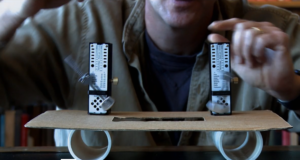
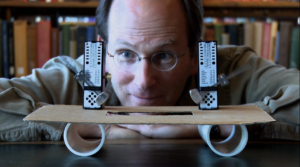
I spent about a year on the research, reading about the mathematics of synchronization, the science of spontaneous order, our experience with soundscapes, searching for storied people that had a connection to the topic. At a certain point I had to draw a line and just make the film — it really was a topic that kept expanding as I learned more. Once I filmed the initial interviews and some basic images, I started editing them together with the thought that one stage would inform the next. When the first cut was finished it felt quite empty. I realized I was making a visual film about something invisible! A seemingly impossible feat. I thought I was close to the end, but it wound up taking two more years. My editor and I had to go back to the drawing board and rethink the film. The initial idea of the heartbeat informed the final structure. The heart operates because of pacemaker cells — single cells that, when put on their own in a Petri dish, expand and contract rhythmically. When a second cell is put in the Petri dish it will find the other cell, connect, and synchronize with the first. The same goes for the third and so on for the 10,000 cells that power the pacemaker of the heart. This became the structure for the film: to start with a single cell and expand into a complex network, finding a connection between the single and the many.
It took a very long time to find the form of the film, which was a great benefit in the end. The film has a very complex structure that folds in on itself; a side effect of its lengthy editing schedule, waiting for footage for certain scenes, and almost giving up on a few occasions.
Mike: I’m wondering if you could tell me how you were able to film the familiar for the first time? The steaming cup of tea, the street car lines, the windows lighting up at night. Is it like turning to face the person you wake up next to each morning as if you’ve never done it before?
Tess: There’s a kind of game my brother and I used to play as children; we would repeat our names over and over again until they no longer sounded like our names, but instead strange sounding syllables. Tess, Tess, Tess, Tess… We’d giggle at the absurdity of the sound. Even reading it multiple times, the name loses all associations and connotations. It starts as my name, then becomes The Name Tess, then the letters t-e-s-s, and then a crude asymmetrical shape.
One way to make the familiar unfamiliar is to get closer to the subject. Immerse yourself. Watch your surroundings for a long, contemplative period until they are no longer a whole, but a space filled with single entities interacting with each other. Then keep watching until they become something new.
A second way to do this is deprivation. You can see something for the first time by depriving yourself and then re-exposing yourself to it. Sometimes I won’t hear my name for a long time. When someone says it I sometimes wonder, “Is that my name? What a strange sounding name. It’s so short and soft. Why did my parents name me this? What do people think when they hear it?”
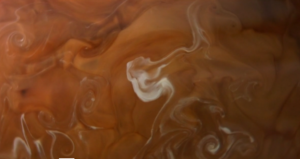
In the film, Charles suggests that a way of doing this is through meditation. After not speaking for a month on a silent meditation retreat, he returns home to hear all sounds afresh. He feels like he doesn’t have any skin. I don’t meditate, but I think some of us have ways in our lives where we accomplish a form of meditation. Whether it’s spending long stretches of time alone, or having a pensive cup of tea at the start of the day, or taking a brief moment between busy activities to contemplate without distraction; these are all important in understanding your surroundings in a greater context.
The third way happens unconsciously. By intensely studying a subject like synchrony, I created a filter through which I could see my regular activities. I would fall asleep and dream of rotating turbines; I would walk home from work at night and see the little beads of light in the traffic; I would hang out at a friend’s condo and couldn’t help but notice people in the next condo doing the same activities at the same time. It is a subtler version of Archimedes’s Eureka moment (these are moments when different parts of the brain suddenly synchronize). It became necessary to carry a camera with me everywhere I went. Or make a return trip to film something I had seen on my way to the grocery store or the gym.
Mike: Could you spare a few words about the subjects of your film? How did you find these people, with their backgrounds that are foregrounds, their multiply interested selves and pursuits?
Tess: Many of the subjects I found through research, recommendation, and word of mouth. Steven Strogatz (the mathematician) wrote an entire book about synchronization. Caroline Palmer (the psychologist) was someone I found by cold emailing Daniel Levitin (author of This is Your Brain on Music) and asking for suggestions about who to talk to. The cardiac nurse was a friend of a friend, and Roger Nelson of The Global Consciousness Project was someone Peter Mettler suggested. There were others I spoke to (entire sections of the film that didn’t make it in), all from different disciplines. I still need to find a project for the wonderful dairy farming footage I cut out.
I wanted varying perspectives of people from different fields. But when I put the initial interviews together with the images I had, the film fell flat. Each interview was having a conversation, but they weren’t speaking to each other. I thought I was finishing, but was only just beginning. It was interesting to hear these facts and see these images about synchronization, but it was all very essayistic. The viewer needed to feel the idea of synchronization, and to arrive at these ideas themselves rather than be told about them. I also felt the film leaned heavily toward “expert opinions” which is not what I wanted. To me it didn’t matter who was speaking, it was what they were saying.
This is when a friend suggested I talk to her pal Charles Spearin (of Broken Social Scene, Do Make Say Think). He had just finished a solo album called The Happiness Project where he conducted interviews with his neighbours about happiness. He then looped sections of their interviews and found the natural rhythms and melodies within their voices and turned their voices into music, laying tracks of instruments underneath. To solve the problem of needing the viewer to discover and experience something while watching the film, I thought it would be amazing if Charlie could rework the interviews I’d already conducted the way he’d done in The Happiness Project. In the final edit of the film, Ryan (my editor) and I decided that near the opening, the film needed a defining moment where the thesis would be spoken and demonstrated. We needed a song composed of interview clips. So we crudely edited together some key phrases from each character and handed them back to Charlie. He made a composition out of these and we edited the picture to it.
The final edit results in engaging interviews that take the viewer to unexpected places. The audience hears an interview, then in the next scene meets Charles who talks about his work. Then the audience hears the previous interview again, but coming from Charlie’s speakers as he demonstrates how he works. At (what appears to be) the end of the interview, Charles says, “And then once you loop it, it starts to become very musical. And it’s amazing, it becomes more and more songlike every time you hear it.”
The film seems to move on and cuts to a new scene until the audience hears again, “Then once you loop it, it starts to become very musical. And it’s amazing, it becomes more and more songlike every time you hear it.” That’s when all the other voices of the previous interviews come in. “It’s a lovely expression.” “Then they start to fire together.” “There must be something driving this behavior.” The voices describe the phenomenon of synchronization, spontaneous order, and interdependence, meanwhile the music is actually doing this and allowing the viewer to experience it in a surprising and playful way.

Mike: There are some films I see that make me wonder how their maker ever survived them. At the very least, it seems that their makers must have had their faces recarved by the experience, opened in some new and unexpected way. As I watch your movie again, its many strands of looking and science and art appear as an always unfolding love story. In Anne Michael’s The Winter Vault she writes that “How are you?” is just another way of asking the essential question, “Are you in love?” I’m wondering if you could speak about the personal aftermath of this making.
Tess: I don’t know the answer to how I survived the film. Based on our previous dialogues it wouldn’t be right to answer something as simple as “because I had to.” I was tested on levels I never knew existed. It challenged my creativity, my intellect, my technical capabilities, my relationship, my family, my crew members, my job, and my finances. There were many points where I didn’t think I could continue. A Simple Rhythm was the innocent step into filmmaking adolescence where I thought I knew so much about the world only to find out that there is far more out there than anyone can imagine. It was the coming of age experience in my growth as a filmmaker and I tread lightly moving forward into the next projects.
I spoke earlier about filmmaking being a medium that is not in the present tense. It was this film that showed me that. It started as a little idea in a farm house in Switzerland and ended three years later in an attic on Dovercourt… or maybe at the Royal Cinema in the mix with the flu. (Where does a film end?) I met my editor when making the film and now we own a house together, and he is my incredibly dedicated and supportive partner of four years. There are so many things I wouldn’t have today if I didn’t make this film, but to imagine going through it again is impossible.
To make a film like this without having it wear the signs of its struggles is a feat unto itself. My hope was that the viewer would see the world a little differently. It was probably an innocent thought to assume that my perspective wouldn’t change from the beginning to the end of the film, but it has immensely. It is not the type of subject that is easy to live inside for three years, and the process was such that I had to be thinking of it all the time. I would wake up and think of circadian rhythms, then start my day and ponder how that relates to my routines and so on. Ryan would get phone calls from me at the farmers market. “Did you know that cows align themselves to magnetic poles when they’re grazing!?” This world is a menagerie of incredible detail and relationships that are impossible not to notice once understood.
There are certain subjects I spent so much time with that I can’t look at the same way again. Like a former friend, now distant, with whom I once shared great conversations. I can’t look at the breeze through my curtains without thinking of the high and low pressure systems that created it, and the towering storm it might become later. It takes effort to put that aside to appreciate the impossibly delicate feeling of the wind hitting my face.
To engage with the world is to look at one’s surroundings and attempt to understand them. To truly live is to take these observations and look within to learn and grow. We all have our own ways of achieving this and for me — at this time in my life — it is filmmaking. I made A Simple Rhythm because it helped me understand the relationships in my life and the ecosystem of which I am a part. I made A Simple Rhythm because I had to.